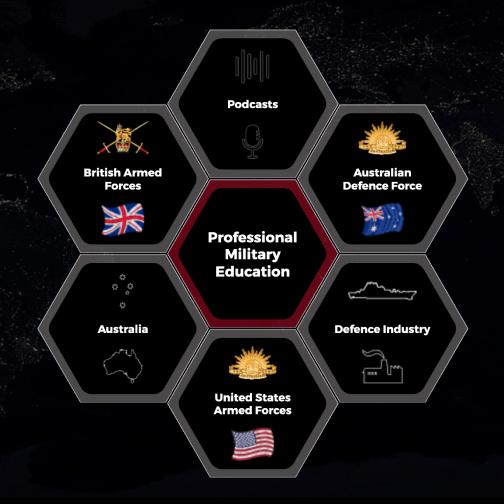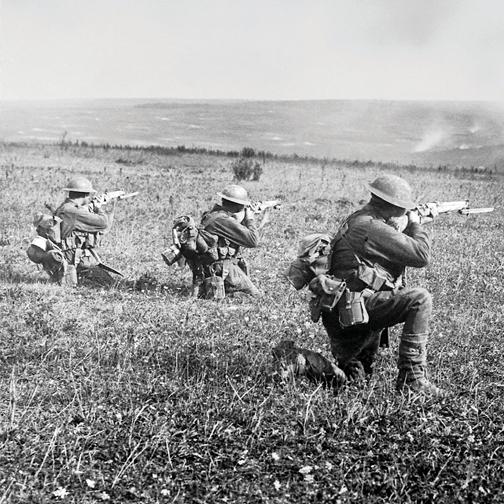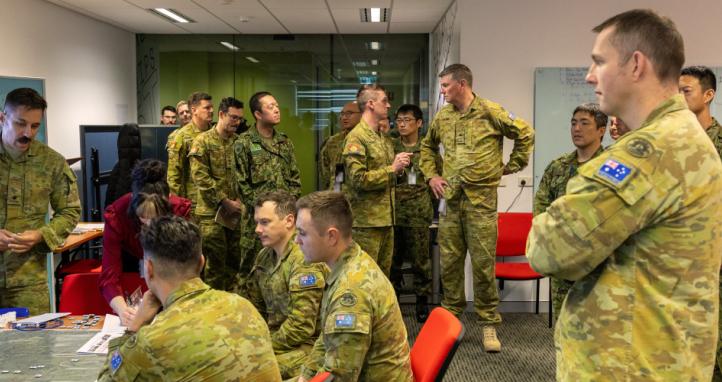Preface
Across the Australian corporate and public landscape, many former non-commissioned officers (NCOs) and officers occupy senior leadership, executive, and consulting roles. This suggests that military training can produce outstanding leaders when their potential is identified and nurtured. Yet this raises a critical question: if military leadership can thrive so effectively in the civilian sector, why do some of the most capable individuals leave Defence before reaching senior rank?
This article examines how the current military promotion framework – while designed for fairness, continuity, and readiness – may inadvertently favour process over potential. Drawing on personal experience, observed practices, and existing research, I argue that promotion systems heavily reliant on vacancy fulfilment, qualification codes, and subjective reporting risk overlooking genuine leadership talent.
The article also explores deeper cultural trends within Defence that further constrain leadership development, including the tendency to reward risk-averse behaviour, the over-reliance on character over competence, and the perpetuation of a closed leadership class dominated by those with limited experience outside the military.
The aim is not to disparage Defence, but to spark discussion on how reforms could better balance character, competence, and leadership potential in the selection of future leaders.
When Proficiency Trumps Potential
Promotion in Defence is widely seen as a recognition of discipline, service, and leadership. However, as Reed (2011) in Tarnished: Toxic Leadership in the U.S. Military observed, advancement can sometimes prioritise technical proficiency and box-ticking rather than authentic leadership ability.
This is consistent with my own observations: at the NCO and junior officer levels, individuals are often advanced because they have completed the right courses or occupied a role for a specified period, rather than through any formal assessment of aptitude, vision, or leadership style. The system safeguards readiness, but it may not always promote those best suited to lead in complex or high-stakes environments.
Vacancy and Qualification Codes: Necessary but Narrow
The vacancy-based model ensures every position is filled by someone who has met defined standards. Yet, as Tim Kane notes in Bleeding Talent (2012), this rigid approach can frustrate high performers and accelerate attrition. When leadership potential is not actively considered, technically proficient but leadership-limited individuals may rise, while innovative and adaptive thinkers move on.
Civilian organisations would rarely appoint senior leaders without structured interviews or leadership assessments. In contrast, military promotions to command are often based solely on eligibility criteria and annual reports. This is a stark difference – and one that risks missing out on candidates with strong interpersonal skills, initiative, and decision-making ability.
The Limits of Reporting and Peer Review
Performance reporting remains central to promotion decisions. Yet such reviews are inherently shaped by the reviewer’s access to, and impressions of, the candidate. In reserve contexts especially, reviewers may have only limited exposure. As Reed (2011) highlights; bias, politics, and cultural conformity can distort evaluations.
The result is what Kane (2012) and others have described as a “closed loop” of leadership development – where those who best fit the system rise, not necessarily those who best embody leadership excellence.
First-hand observations of Career Management Boards (Mankowski (2024)) indicate a system that recognises the importance of evaluating potential alongside performance, valuing candidates’ narratives, self-awareness, and diverse experiences. However, this also highlighted several limitations:
- The absence of formal interviews limits the Board’s ability to probe leadership judgement, decision-making, and vision.
- High workloads and reliance on written summaries may favour polished prose or narrative skill over substantive performance evidence.
- Potential bias persists, particularly in merit grouping, without external verification or challenge.
- The limited time available to Board members constrains their capacity to fully understand individual candidates.
The Talent Drain
Those with high potential often see more transparent opportunities elsewhere. In the civilian workforce, leadership hiring processes typically involve interviews, reference checks, and clear, merit-based criteria. By contrast, Defence’s opaque and qualification-driven system can appear arbitrary to ambitious leaders who value accountability and fairness.
Unsurprisingly, many transition successfully out of Defence, leveraging their skills into sectors that recognise and reward initiative. As Kane (2012) describes, this steady outflow risks leaving behind a diluted pool of leaders – dedicated, but not always representative of the best the organisation had to offer.
Organisational Risk
The costs of failing to promote on leadership potential are not abstract. Research on unit cohesion and turnover during Operation Iraqi Freedom (Turning Around the Effects of Turnover, 2008) found that high turnover of experienced leaders degraded team effectiveness and morale. When promotions are driven more by process than potential, Defence risks replicating these problems.
Moreover, as Willink & Babin argue in Extreme Ownership (2015) and The Dichotomy of Leadership (2018), leadership is fundamentally about accountability, adaptability, and empowering others. Without robust mechanisms to identify those capable of this, Defence risks creating leaders who are proficient administrators but hesitant decision-makers – ill-prepared for the adaptive challenges of modern conflict.
A Way Forward
Reform need not discard the structure that underpins readiness. Rather, Defence could consider incremental adjustments that blend existing systems with proven private-sector practices:
- Structured interviews for leadership and command roles, testing decision-making and vision.
- Independent selection panels with cross-unit representation to reduce bias.
- 360-degree feedback, including input from subordinates, to capture how individuals are perceived by those they lead.
- Broader leadership programs that integrate technical training with practical leadership evaluation.
- Flexible pathways that acknowledge diverse leadership styles and civilian-acquired expertise.
Most critically, Defence should foster a cultural shift: one that values initiative, accountability, and outcomes – not just compliance and endurance.
Conclusion
Defence’s promotion system ensures continuity and technical readiness, but it risks losing its best people by not systematically identifying leadership potential. Research by Kane, Reed, and others demonstrates that over-reliance on qualification-driven advancement can weaken leadership at higher levels and drive out high performers.
Exceptional leaders do emerge within Defence, but often in spite of the system, not because of it. If Defence seeks to retain talent and build resilient leadership for the future, the central question should no longer be simply “who can fill the role?” but “who should?”
References
- Kane, T. (2012). Bleeding Talent: How the U.S. Military Mismanages Great Leaders and Why It’s Time for a Revolution. Palgrave Macmillan.
- Reed, G. E. (2011). Tarnished: Toxic Leadership in the U.S. Military. Potomac Books.
- Mankowski, M. (2024). “Career Management Boards.” The Cove. Australian Army. Available at: https://cove.army.gov.au/article/career-management-boards
- Griffith, J., & Vaitkus, M. (2008). Turning Around the Effects of Turnover: Military Lessons Learned from OIF. Military Psychology, 20(1), 17–35.
- Willink, J., & Babin, L. (2015). Extreme Ownership: How U.S. Navy SEALs Lead and Win. St. Martin’s Press.
- Willink, J., & Babin, L. (2018). The Dichotomy of Leadership: Balancing the Challenges of Extreme Ownership to Lead and Win. St. Martin’s Press.










The idea of 360 degree reviews has scared many officers and SNCOs in the ranks For the fear of being caught out red handed at their incompetence in their position - yet we all know who those people are and those individuals are usually the ones who have box ticked, are risk adverse and fail to understand what leadership Really is - they are all usually ‘yes men’.
Defence has a lot of managers, but few real leaders. Leaders fight for the troops, are capable and competent and take calculated risks - and occasionally make mistakes, but ask questions and accountability of their higher command - something that gets people’s nose out joint very fast.
Our current system lacks the ability for leaders to grow, therefore we do see them leave and thrive in the civilian world, because that is the place they can make a difference, make mistakes and don’t necessarily have to be in a job for 20 years to add real value and effect in the workforce.
Well done on a great article John.
As a commissioned officer, I have been left disappointed with the lack of leadership, character and stewardship of my colleagues. It is not for a lack of opportunities to lead; there are simply very few leaders who work for their soldiers.
The mantra of “but did anyone die?” sets the standard so low that it rests upon the ground. The standard cannot be any lower than what we have come to accept.
As someone who joined the ADF with prior experience, I strongly encourage any form of genuine self-reflection and improvement that goes beyond an annual unit snapshot presentation.
I believe this extends to the awards system but I'll save that for another day.
I think the only fix is to make people more accountable and to some degree, bring back this separation between boss and subordinate.
Promotion should never follow a one-size-fits-all approach. Different services, trades, and ranks require tailored criteria. For example, the skills needed for an Infantry CPL to become a SGT differ greatly from those required for an Air Force CPL in a Personal Capabilities role.
There will always be cases where promotions seem undeserved—whether due to timing, qualifications, leadership ability, or vacancies—and no process will completely eliminate that perception.
An interview process with a diverse selection board could help identify the right candidates. Incorporating 360-degree feedback might add value, but it must be treated cautiously, as personal biases and grudges can influence comments.
Strong leadership development comes from robust training and a well-structured promotional pipeline. The Air Force could benefit from adopting elements of the Army’s NCO model, which emphasizes practical application. Currently, Air Force junior leadership courses are too short and heavily focused on theory, with limited opportunities for assessed, hands-on leadership practice.
In technical trades, there’s also a significant gap between leadership training and when an LAC/W earns a B Licence—at which point they may supervise and mentor others while missing valuable promotional courses because they are not a CPL.